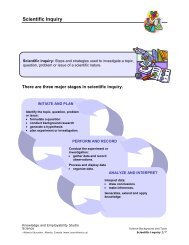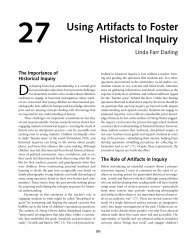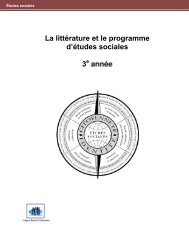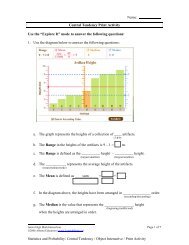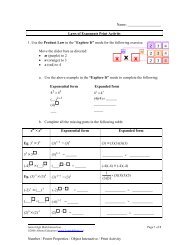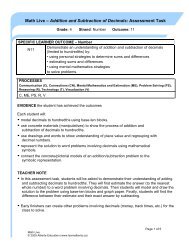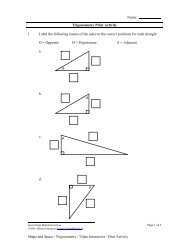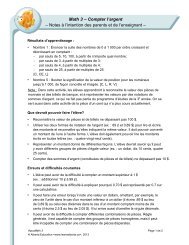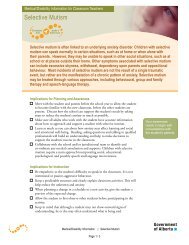Individualized Program Plans - LearnAlberta.ca
Individualized Program Plans - LearnAlberta.ca
Individualized Program Plans - LearnAlberta.ca
You also want an ePaper? Increase the reach of your titles
YUMPU automatically turns print PDFs into web optimized ePapers that Google loves.
Knowledge and Employability StudioTeacher Workstation– Provide support in learning to use assistive technology,particularly computer technology. Keyboarding skillsand basic word processing skills are important tosuccess after senior high school.– Support students in taking responsibility for describingtheir needs and seeking appropriate support. For twostrategies you <strong>ca</strong>n share, seeHelping Students Communi<strong>ca</strong>te in the IPP Process.• Involve appropriate school personnel in developing IPPs.– All school personnel involved in providing instruction forstudents with learning disabilities should be involved indeveloping IPPs. Regular classroom teachers are betterable to use IPPs as instructional guides when they areinvolved in developing them.– IPPs are most effective when viewed in the context of anactive problem-solving process, which <strong>ca</strong>n be facilitatedby an organizational structure; e.g., Student SupportTeam Model, that provides a forum for ongoing teamplanning.– Provide professional development and guidance forteachers to increase understanding of the purpose andstructure of IPPs.– Encourage support for the IPP process; e.g., time forinvolvement, communi<strong>ca</strong>tion, access to additionalexpertise.Individualizing IPPs• Focus on the individual needs of students, not on the<strong>ca</strong>tegori<strong>ca</strong>l label. Avoid a generic list of accommodations:individuals with learning disabilities vary widely in theirstrengths and needs.• Consider ways that instruction <strong>ca</strong>n build on students’a<strong>ca</strong>demic, cognitive and processing strengths.• Consider the appropriate balance for individual students.Each student should participate in the regular curriculum asmuch as possible with accommodations to support success.Students may also need additional instruction to developskills and strategies.• Use multiple sources of assessment data to determinestrengths and needs.• Consider students’ needs beyond a<strong>ca</strong>demics, such as socialand behaviour needs.• Focus on key goals for the individual student.• Build in time for students to receive additionalinstruction/mentoring in literacy, learning and organizationalstrategies.• Consider the workload and students’ areas of difficulty.Where possible, adjust students’ timetables to balance thenumber of courses with heavy demands for reading andwritten assignments taken in a term.<strong>Program</strong>ming for Students with Learning Disabilities<strong>Individualized</strong> <strong>Program</strong> <strong>Plans</strong>©Alberta Edu<strong>ca</strong>tion, Alberta, Canada (2005) (www.<strong>LearnAlberta</strong>.<strong>ca</strong>) <strong>Individualized</strong> <strong>Program</strong> <strong>Plans</strong> 5/10




